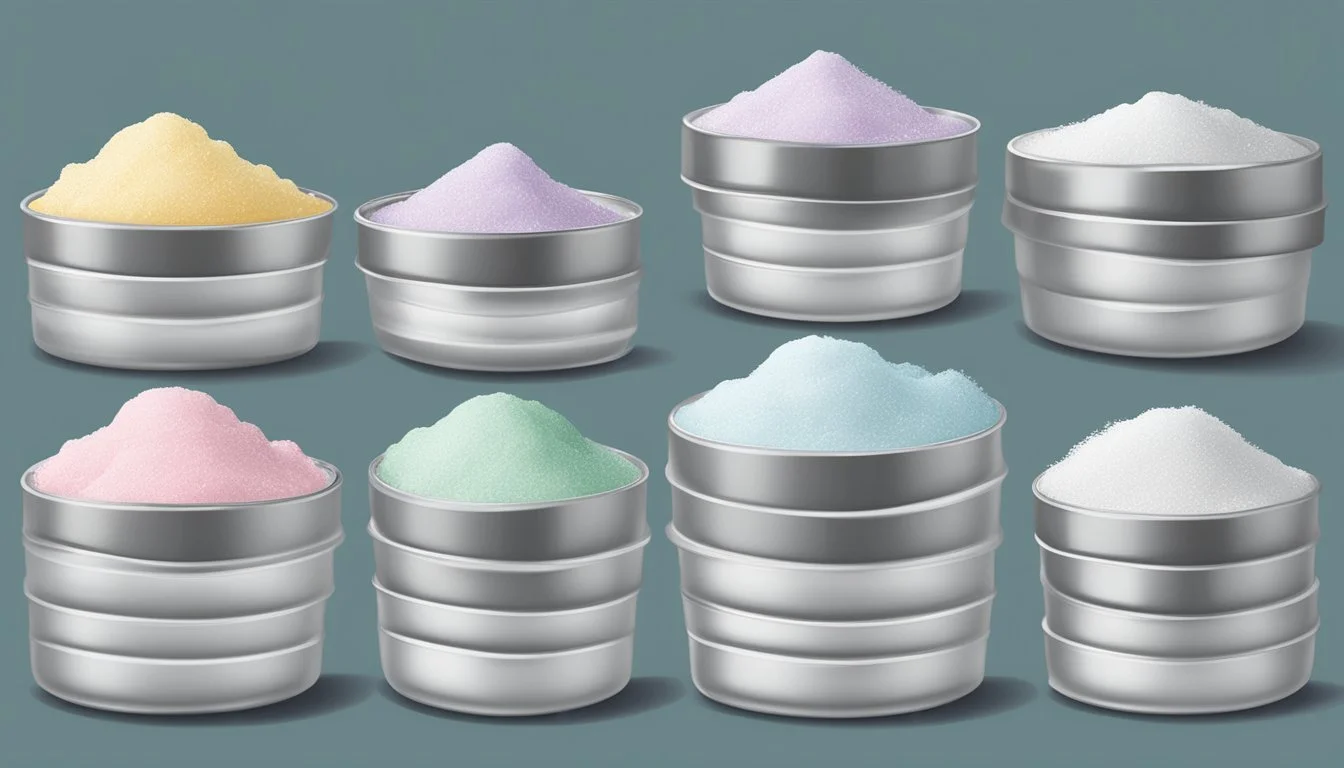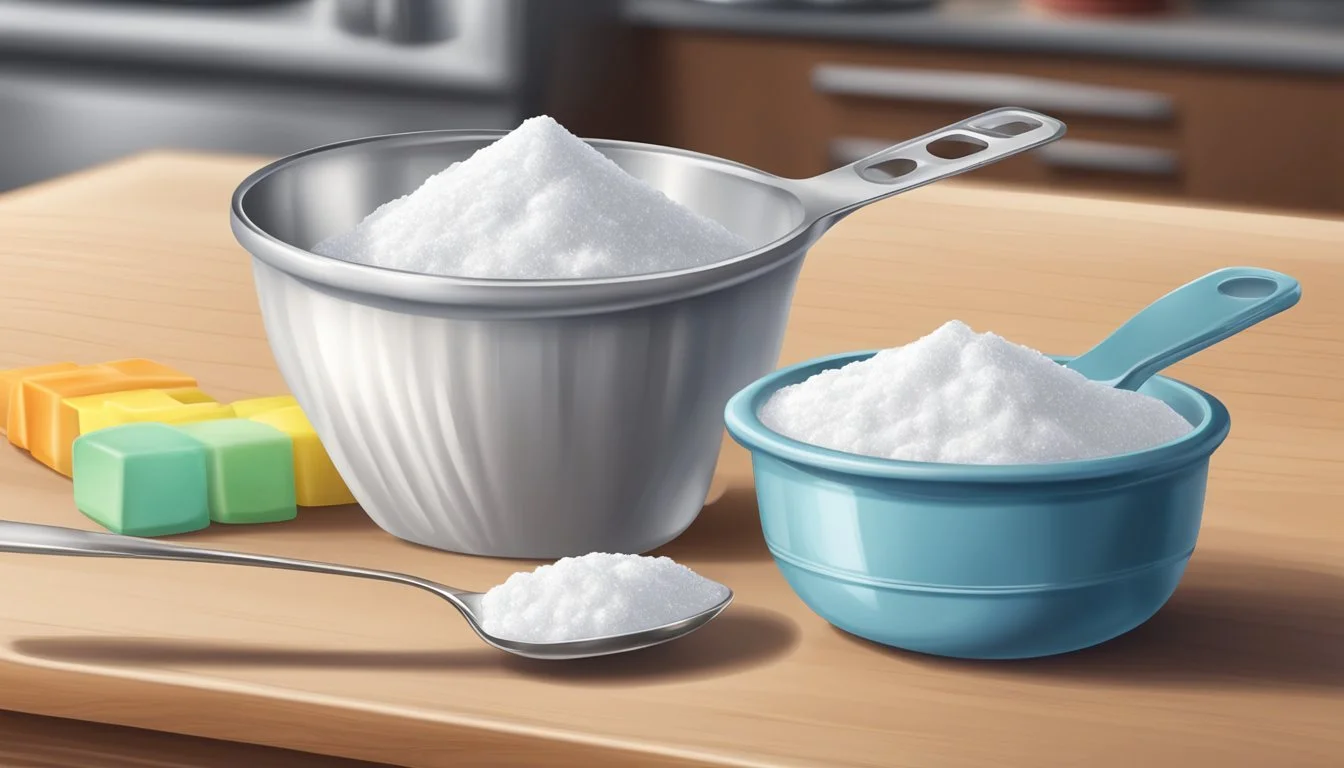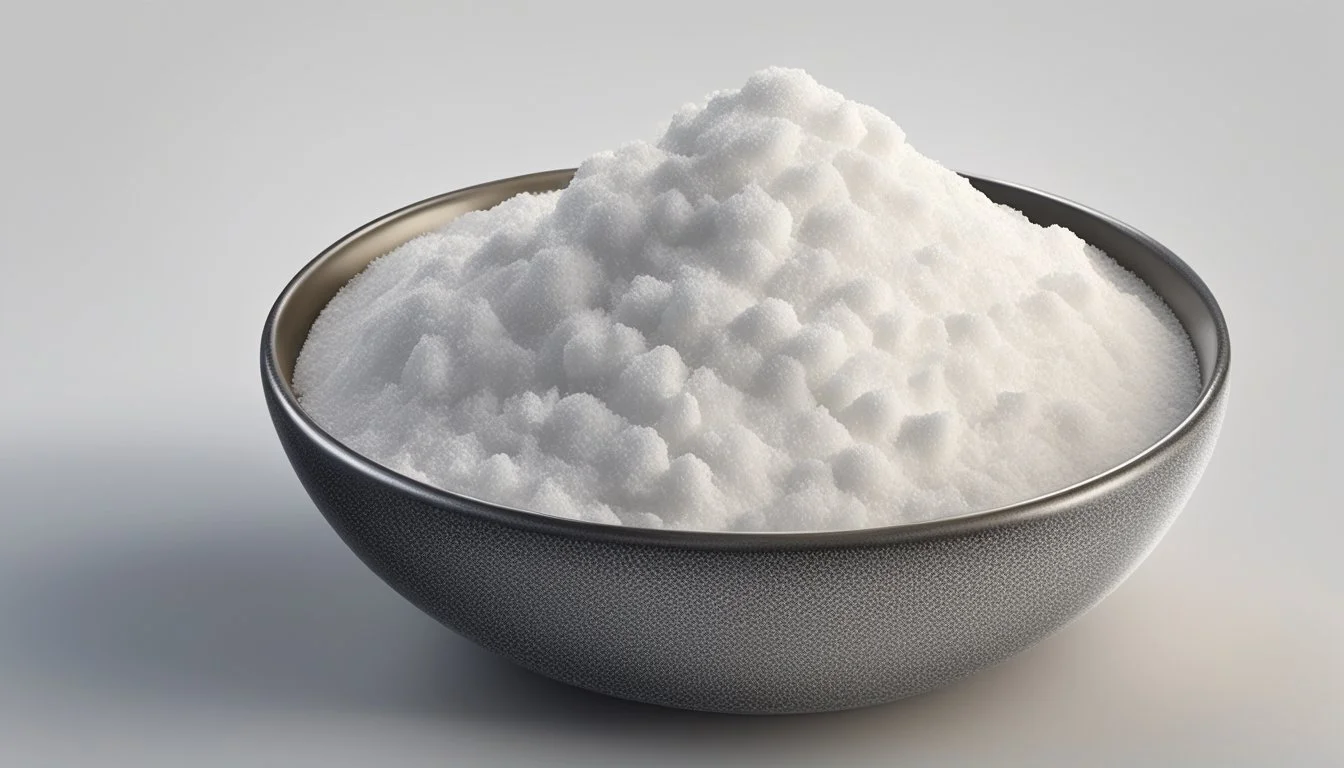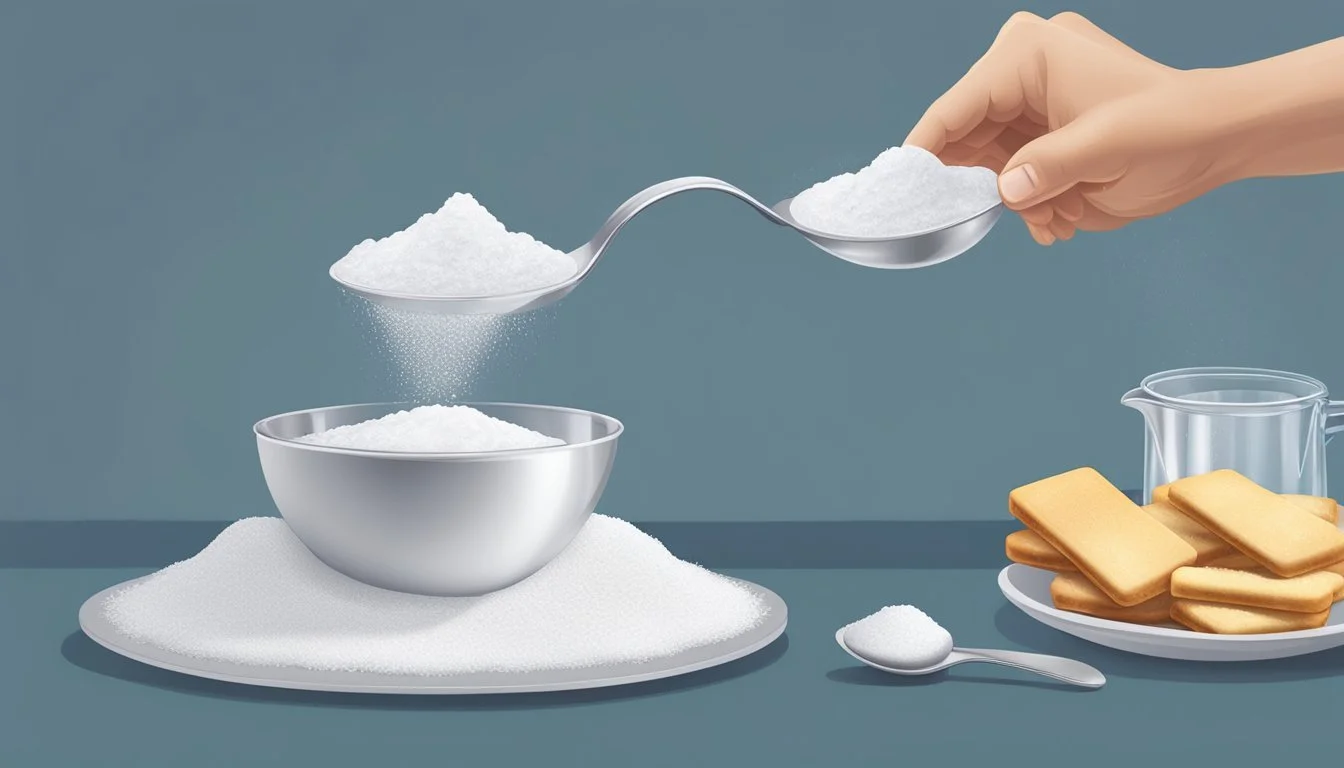How Many Tablespoons in a Pound of Icing Sugar
A Precise Measurement Guide
When baking or cooking, precise measurements are critical, especially when working with ingredients such as icing sugar that can significantly alter the texture and consistency of a dish. Icing sugar, also known as confectioner's sugar or powdered sugar, is a staple in dessert recipes and frostings. It is important to understand how to correctly convert the weight of icing sugar to volume, which is particularly useful when kitchen scales are not available.
A pound of icing sugar is a standard measurement in recipes, but many home cooks use tablespoons for measuring smaller quantities. The conversion of a pound of icing sugar to tablespoons depends on various factors, including the sugar's density and whether it has been sifted before measuring. Normally, an unsifted pound of icing sugar equates to around 58 tablespoons. This conversion provides a foundation for measuring icing sugar when preparing recipes that require precise proportions for optimal results.
Understanding Measurements in Baking
Accurate measurements are crucial in baking, affecting both the process and the final product. Baking recipes depend on the precise balance of ingredients measured by weight or volume.
Units of Measure
In baking, a cook may encounter two primary types of measurements: volume and weight. Volume is a measure of the space an ingredient occupies, commonly referenced in cups, tablespoons, and teaspoons. Weight, on the other hand, is the measure of how heavy an ingredient is, and in the United States, it is typically measured in ounces and pounds. A unit of mass, like ounces, provides a more precise measurement than a unit of volume. This distinction is particularly important when dealing with ingredients like icing sugar, whose volume can vary significantly depending on whether it is sifted or packed.
When converting units, it is important to use the right conversion factor. For example, when converting from volume to weight for icing sugar:
Volume Weight 1 cup approx. 4oz
Importance of Accuracy
Accuracy in measuring ingredients is vital in baking to ensure the intended texture, structure, and flavor of the finished product. Whether a recipe calls for a pound of icing sugar or a cup of flour, the exact amount can determine the success or failure of a baked good. A baker must decide whether to measure ingredients by weight or volume. While the choice may vary, many professional bakers prefer the precision of weight measurements, as it eliminates inconsistencies related to packing or air content.
For icing sugar, the preference often leans toward weight measurement. When a recipe requires a pound of icing sugar, using a kitchen scale to measure 16 ounces will yield a more consistent result than trying to measure the equivalent in cups, which can fluctuate.
Conversion Basics
In the context of culinary measurements, precise conversions between weight and volume are essential for accurate ingredient ratios. This section explores the foundational principles required to translate between these measurement systems, specifically focusing on how one can convert a pound of icing sugar into tablespoons.
Weight-to-Volume Conversions
When converting from weight to volume, it's important to use the appropriate conversion factor for the substance in question, as density plays a crucial role in this process. For icing sugar:
1 pound of icing sugar equates to approximately 58 tablespoons.
This is based on the average density of icing sugar, which can slightly vary by brand or if it has settled.
Volume-to-Volume Conversions
Occasionally, recipes may require volume-to-volume conversions. To convert tablespoons to cups, for instance, the chef needs to know the following standardized equivalencies:
1 cup = 16 tablespoons
1 tablespoon = 0.0625 cups (or 1/16 of a cup)
Understanding these conversions helps in scaling recipes up or down and aids in ensuring consistency in the culinary process. It's also beneficial to know that:
1 cup of icing sugar typically weighs around 4.5 ounces or 128 grams when unsifted.
1 teaspoon weighs approximately 0.14 ounces or 4 grams.
These equivalents are crucial for a baker to make precise adjustments to recipes or to properly scale ingredients when converting between metric and imperial systems.
Icing Sugar Specifics
In the realm of baking and dessert preparation, icing sugar is a crucial ingredient. This section explores the unique physical properties of icing sugar and contrasts it with granulated sugar.
Density and Consistency
Icing sugar, also known as powdered sugar, is characterized by its fine, powdery consistency that easily dissolves. Its density is lighter compared to granulated sugar due to the air pockets that are created during the pulverization process. A pound of icing sugar translates approximately to 58 US tablespoons.
Icing Sugar vs. Granulated Sugar
While both icing sugar and granulated sugar originate from the same source, they serve different purposes in cooking and baking. Icing sugar is granulated sugar that has been ground into a fine powder and often includes an anti-caking agent like cornstarch. This prevents clumping and ensures a smooth texture. In contrast, granulated sugar is coarser and its larger crystals provide structure in baked goods. When measuring, the two cannot be interchanged without affecting the texture and consistency of the dish due to their differences in density and texture.
Common Baking Measurements
Accurate measurement in baking is key for successful results. This section focuses on the conversion from tablespoons and cups to pounds, which is particularly useful when working with icing sugar.
Tablespoon Conversions
When measuring ingredients, chefs often need to convert tablespoons to more manageable units for larger recipes. A single tablespoon of icing sugar typically weighs around 7.5 grams. Since there are 16 tablespoons in a cup and approximately 453.59 grams in a pound, conversions become a necessity in larger batches.
1 tablespoon of icing sugar: 7.5 grams
16 tablespoons (1 cup): 120 grams
Cup to Pound Ratios
Understanding the cup to pound ratio allows a baker to scale recipes up or down without error. Icing sugar, due to its density, has a specific conversion rate from volume to weight.
1 cup of icing sugar: Approximately 120 grams (4.23 ounces)
Number of cups in one pound of icing sugar: Roughly 3.75 (453.59 grams / 120 grams per cup)
Utilizing these conversion rates helps ensure that measurement is both accurate and replicable, ensuring consistent quality in baking creations.
Ingredient Equivalencies
When preparing recipes, it's essential for bakers to understand the equivalencies between different units of measurement, particularly when dealing with common ingredients like sugar and butter. This understanding allows for precise conversions and ensures the intended outcome of a recipe.
Sugar Equivalencies
Icing Sugar:
1 pound of icing sugar is approximately 58 Tablespoons.
The standard conversion for icing sugar is crucial for bakers to ensure sweetness is consistent across batches.
Granulated Sugar:
1 pound of granulated sugar is typically about 2 cups.
Correct measurement of granulated sugar is key to the texture and rise of baked goods.
Butter and Other Ingredients
Butter:
1 pound of butter equates to 2 cups or 32 Tablespoons.
1 stick of butter, commonly used in the United States, is 1/2 cup or 8 Tablespoons.
For other common baking ingredients, measurements can vary significantly depending on the substance's density.
Flour:
All-purpose flour: 1 cup is typically around 120 grams.
Eggs:
Large egg (whole, beaten): 1 egg provides about 3 Tablespoons.
Large egg (yolk only): 1 yolk provides approximately 1 Tablespoon.
Accurate conversions between weight and volume measurements for butter and other ingredients are vital for the consistency and success of the culinary creation.
Practical Conversion Applications
In the context of cooking and baking, accurate measurement conversions between weight and volume are crucial for consistent results. This section examines how one can efficiently convert pounds to tablespoons when working with icing sugar.
Using Conversion Calculators
For precision and ease, a sugar conversion calculator can be a reliable tool. These calculators provide an instant conversion from pounds to tablespoons, factoring in the specific density of icing sugar. Typically, the conversion ratio for icing sugar is:
1 pound of icing sugar ≈ 58.06 tablespoons
One simply inputs the weight of the icing sugar they have, and the tool automates the conversion to yield the volume in tablespoons. It's an indispensable quick reference that eliminates guesswork and ensures accuracy in recipes.
Estimating Without a Scale
For those occasions when a scale isn't at hand, approximating the volume of icing sugar can be done using the known conversion ratio, keeping in mind a standard pound can equate to roughly 58 tablespoons. Although less accurate than using a scale and calculator, this approximation allows a baker to proceed with the recipe. To better estimate the amount needed, consider that:
1/2 pound of icing sugar ≈ 29 tablespoons
1/4 pound of icing sugar ≈ 14.5 tablespoons
These rough estimates can be sufficient in scenarios where precise measurements are not pivotal for the recipe's success, or when one must work quickly without the luxury of precision tools. However, for the best results, particularly in baking, using a scale and a conversion calculator is highly recommended to maintain consistency and quality.
Recipes and Usage
The precision in measuring icing sugar is critical for the successful outcome of recipes, and understanding the conversion of one pound of icing sugar to tablespoons aids in accurate ingredient incorporation. Baking and cooking enthusiasts often turn to this conversion to ensure consistent results in both taste and texture.
Baking Recipes
Baking recipes commonly call for icing sugar due to its ability to dissolve quickly and contribute to a smooth finish. A pound of icing sugar equates to approximately 58 tablespoons, which is crucial when one is measuring ingredients for cookies, cakes, and frostings. Here are two baking-specific applications:
Cookies and Cakes: They require precise amounts of icing sugar to achieve the right level of sweetness and desired consistency in the dough or batter.
Example: A recipe for buttercream frosting may ask for 3-6 cups (approximately 51-102 tablespoons) of powdered sugar to be whisked with butter and vanilla, creating a smooth topping for cakes and cupcakes.
Frostings and Glazes: The smooth texture of icing sugar makes it preferable for frostings, icings, and glazes, ensuring a glossy finish without the grittiness sometimes found with granulated sugar.
Example: A basic vanilla buttercream icing might involve thoroughly combining butter with icing sugar, using an electric mixer to ensure a fluffy and consistent texture.
Non-Baking Applications
Icing sugar isn't confined to the oven. Its quick-dissolving nature also finds application in non-baking contexts, such as:
Sweetening Cold Beverages: It is ideal for sweetening cold beverages like iced tea or homemade lemonade, as it blends seamlessly without the need for heat.
Example: One may stir a few tablespoons of icing sugar into an iced coffee to add sweetness without the grainy texture of undissolved granulated sugar.
Decorative Dusting: Icing sugar serves as a decorative element for dusting over desserts (What wine goes well with desserts?), adding both sweetness and an appealing aesthetic without altering the dessert's structure.
Example: A fine dusting of icing sugar can be used to top a fruit tart or a brownie before serving to enhance the visual presentation and add a touch of sweetness.
Advanced Topics in Measurement
When measuring icing sugar for shipping or baking, understanding the volumetric weight in shipping and the chemistry of baking is crucial. The physical quantity of icing sugar differs based on its density, which plays a role in both shipping freight and baking where precise chemical reactions occur.
Volumetric Weight in Shipping
When shipping freight, carriers often charge based on the volumetric weight (also known as dimensional weight) rather than the actual weight. It accounts for the space an item takes up on a truck, in a shipping container, or on an airplane. The formula for volumetric weight is:
Volumetric Weight (kg) = [Length (cm) x Width (cm) x Height (cm)] / Volumetric Divisor
The "volumetric divisor" varies by carrier but typically ranges around 5000 for international shipments and 139 for domestic shipments in cubic centimeters per kilogram. This underscores the importance of knowing that a pound of icing sugar occupies more space than a pound of a denser substance.
Chemistry of Baking
In the realm of baking, chemistry plays a fundamental role. Precise measurements of ingredients like icing sugar ensure that chemical reactions occur correctly, which is critical for the desired outcome of baked goods. For instance, the interaction of sugar with other ingredients affects properties such as:
Texture: Sugar aids in the tenderizing process by absorbing water and slowing down gluten formation.
Leavening: It contributes to the leavening process when reacting with baking soda or baking powder, creating carbon dioxide bubbles that enable the dough to rise.
Browning: Through the Maillard reaction and caramelization, sugar is responsible for the color and flavor of baked goods.
It is essential for bakers to understand these reactions and how precise measurements can affect them. Converting from weight to volume, like pounds to tablespoons, is a skill that directly impacts baking success.










